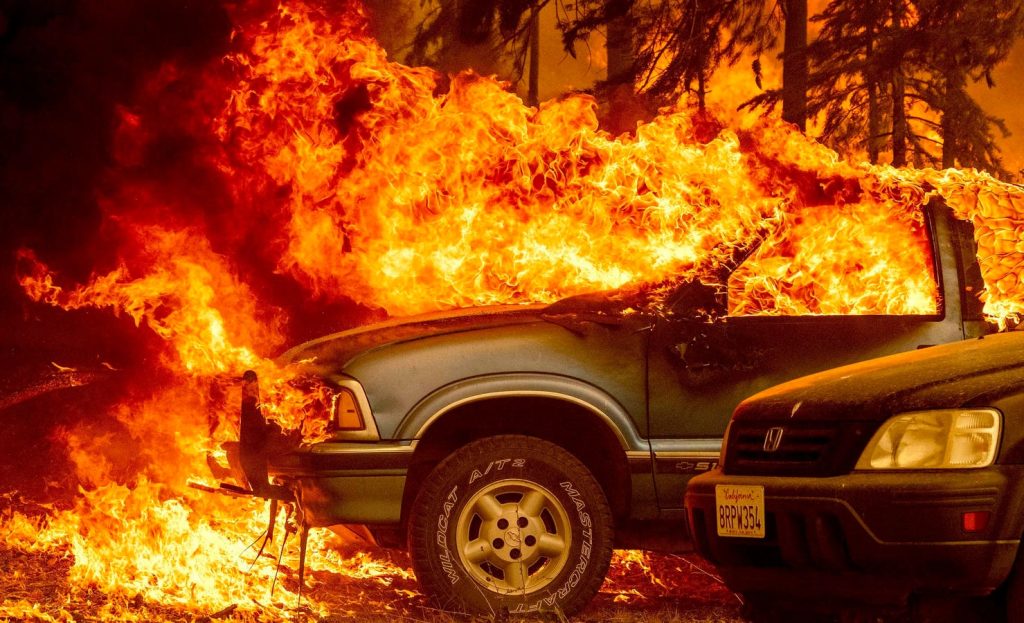The current spate of wildfires could cost the economy of the United States more than $89 billion in lost output, according to a new analysis.
According to research by the economic software and analysis company IMPLAN, the wildfires could have a profound effect on the national economy.
The analysis claims the wildfires could cost 466,000 jobs, a $52.2 billion contribution to gross domestic product (GDP) and $89.6 billion in lost economic output for the US.
It also looked at California and Washington specifically, and found in California, the current wildfires could cost almost 12,000 jobs and more than $2.3 million in output, while contributing $1.5 million to GDP.
In Washington, the current wildfires could see a decrease in 5,195 jobs, $389 million in labor income, and $678 million in contribution to GDP.
In an interview, IMPLAN’s vice president of customer success, Candi Clouse, said some of the economic costs will not become immediately apparent, and only be seen over a longer period of time.
Clouse said these costs include property damage and exposure to smoke, which could have long-term health impacts.
But she added there were immediate costs like the electricity and water needed to fight the wildfires, a loss of household income to families who have been directly affected and for the timber sector itself.
The analysis also notes rebuilding after a wildfire and supporting those affected could actually has a positive impact on the U.S. economy.
In October 2023, a separate study by the U.S congress joint economic committee found climate-exacerbated wildfires cost the United States between $394 to $893 billion each year in economic costs and damages.
And wildfires can also have major health impacts as well.
In an interview, the American Lung Association’s national senior director for clean air advocacy, Will Barrett said the increase in exposure to wildfire smoke “has definitely added to the health burdens that people are facing”.
Barrett said exposure to the fine particle pollution in smoke, which is often referred to as PM2.5, can cause a wide range of negative health impacts, including asthma and heart attacks.
He told me other chemicals could also be contained in some wildfire smoke, meaning it could be even more toxic and have longer-term health impacts.
Barrett added the geographical reach of the impacts is also widening.
For example, he said wildfires in Western Canada in recent years led to smoke and unhealthy levels of air pollution reaching as far as Pennsylvania, while fires last year in Canada exposed a wide swath of communities across the eastern United States.
“An increased exposure to wildfire smoke has a wide range of harmful outcomes, both in the near term and the longer term,” said Barrett.
“It also comes with very high price in terms of lives lost and the mental health toll that wildfires can cause when people are forced to evacuate at a moment’s notice, lose their home or even lose a community.”
Researchers at Columbia University and New York University recently announced they have come up with a tool to forecast the risk of forest fires in any particular region of the western U.S. months in advance, and they can do so within minutes as opposed to hours.
According to the tool’s analysis, researchers have warned there is a high level of certainty that the U.S. regions of California and Pacific Northwest are expected to be hit hard with forest fires in the coming months.
The Rockerfeller Foundation also recently released its annual report for its Zero Gap Fund, which highlights the critical role of capital in addressing pressing challenges, like wildfires.
In 2023, the fund made several new investments including on in Blue Forest’s Forest Resilience Bond I, which serves communities and forests within the western U.S. with long-term ecological restoration to reduce the frequency and severity of wildfires and increase forest resilience.
In an email, the Rockefeller Foundation president Dr Rajiv Shah said: “As the world continues to shatter heat records, we need to urgently identify and scale solutions that advance people’s well-being even as they help reverse the climate crisis.
“Blue Forest is doing just that, restoring and protecting forests and water supplies in frontline communities, avoiding wildfire carbon emissions, and returning capital to their investors.”
Read the full article here










